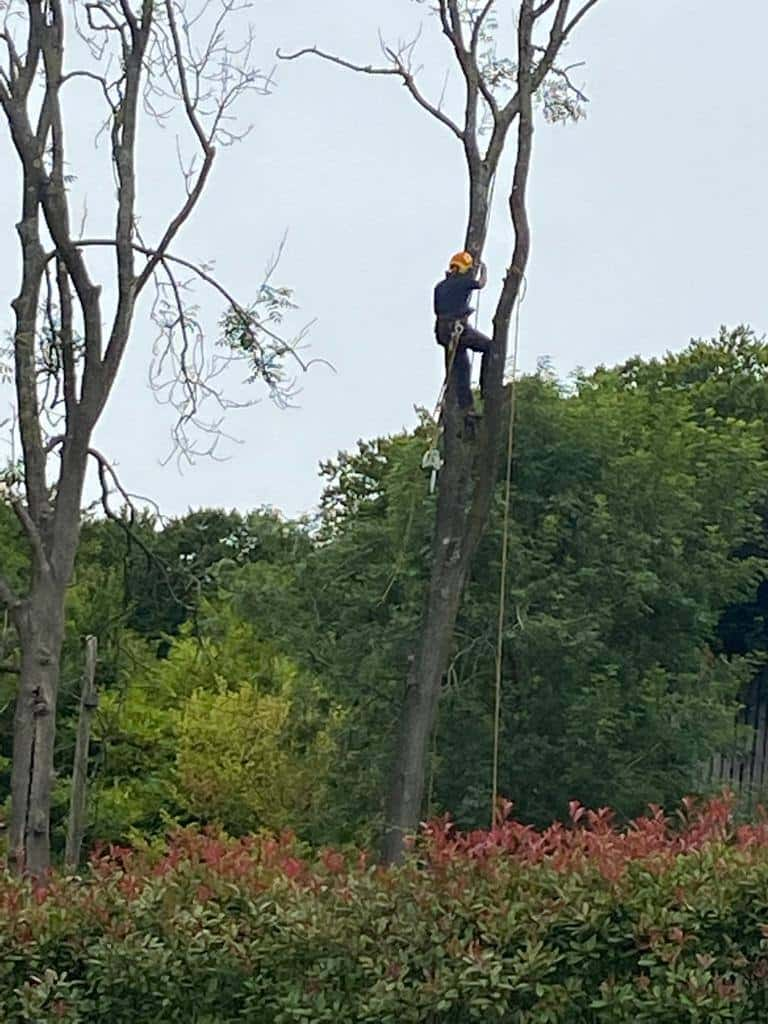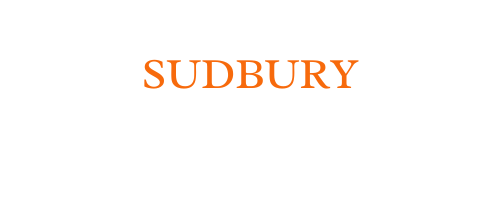The introduction of invasive species into local ecosystems has become an increasing concern across the UK. Invasive species can pose a significant risk to native plants and trees, often overwhelming native flora and creating ecological imbalance. Tree felling, when carried out strategically, can play a vital role in managing these invasive species and protecting native vegetation. At Sudbury Tree Surgeons, we are committed to helping property owners in Sudbury, Suffolk, safeguard their land by addressing the spread of harmful species through professional tree felling services.
Understanding the Impact of Invasive Species
Invasive species are non-native plants, insects, or pathogens introduced to an area, often due to human activity or changes in environmental conditions. When left unmanaged, these species can overrun native trees and vegetation, depriving them of essential resources like water, nutrients, and sunlight. The consequences of an invasive species infestation are severe, leading to the degradation of biodiversity, a weakened ecosystem, and potentially the decline of endangered native species.
Tree Felling: A Proactive Approach
Tree felling is an essential tool for land management, particularly when it comes to controlling the spread of invasive species. Removing trees that are either hosting or surrounded by invasive species helps prevent these harmful organisms from migrating to other healthy areas. By cutting down infested or compromised trees, property owners can reduce the chances of invasive species spreading through wind, wildlife, or root contact.
Here are some key scenarios where tree felling is highly beneficial in preventing invasive spread:
- Removal of Diseased Trees: Certain pathogens spread rapidly from tree to tree. Diseased trees can become vectors for these pathogens, facilitating their spread across properties and even into wider woodlands. By felling affected trees, we can contain the infection and protect nearby trees.
- Targeting Specific Host Trees: Some invasive species, such as pests or fungi, tend to affect particular types of trees. For instance, the oak processionary moth and the ash dieback disease target specific species. By carefully selecting which trees to remove, we can help limit the preferred habitat for these invasive threats, reducing their population and curbing their spread.
- Containing Root-Bound Invasives: Some invasive plants, like Japanese knotweed, spread aggressively through root systems. They can latch onto trees, causing damage and potentially spreading to neighbouring trees through interconnected roots. By removing these infested trees, property owners can better contain the spread of such root-bound invasives and protect other vegetation.
Preserving Ecosystem Health
Tree felling, when managed correctly, allows native plants and trees to thrive by reducing competition for resources. Invasive species are often more aggressive than native species, meaning they compete more effectively for sunlight, water, and nutrients. Removing invasive-infested trees ensures that native species have the resources they need to grow, preserving the ecological balance and supporting a healthier ecosystem.
Additionally, felling compromised trees promotes a safer environment. Many invasive species weaken trees structurally, increasing the risk of branches breaking or trees falling during storms. By removing these weakened trees, property owners reduce hazards and protect both people and property from potential damage.
The Role of Professional Tree Surgeons
Tree felling to control invasive species requires a strategic and careful approach. At Sudbury Tree Surgeons, we bring years of expertise and specialised techniques to ensure that each tree removal is carried out with the highest attention to safety and environmental impact. Our professional team can identify invasive species, assess tree health, and recommend the most effective plan for felling and containment. By entrusting this task to professionals, property owners can ensure a responsible and effective approach to managing their landscape.
Sustainable Disposal Practices
Another critical aspect of invasive species management is the disposal of felled trees and plant matter. Improper disposal can inadvertently spread invasive seeds, pathogens, or insects to new areas. At Sudbury Tree Surgeons, we follow sustainable disposal practices, which may include chipping, controlled burning, or transporting infected materials to approved facilities for safe disposal. This meticulous approach helps to ensure that invasive threats are completely eradicated, preventing their spread to new areas.
Conclusion
Tree felling is a valuable strategy for controlling the spread of invasive species, protecting both individual properties and the broader ecosystem. By removing compromised trees, we help restore balance, reduce competition, and safeguard native plants and trees from the destructive effects of invasives. Sudbury Tree Surgeons are dedicated to offering comprehensive tree felling services that prioritise safety, ecological health, and sustainable practices.
If you are concerned about invasive species on your property, contact us today to discuss how our tree felling services can help you maintain a healthier, more resilient landscape.
Call us on: 01787 322 388
Click here to find out more about Sudbury Tree Surgeons
Click here to complete our contact form and see how we can help with your tree needs.

